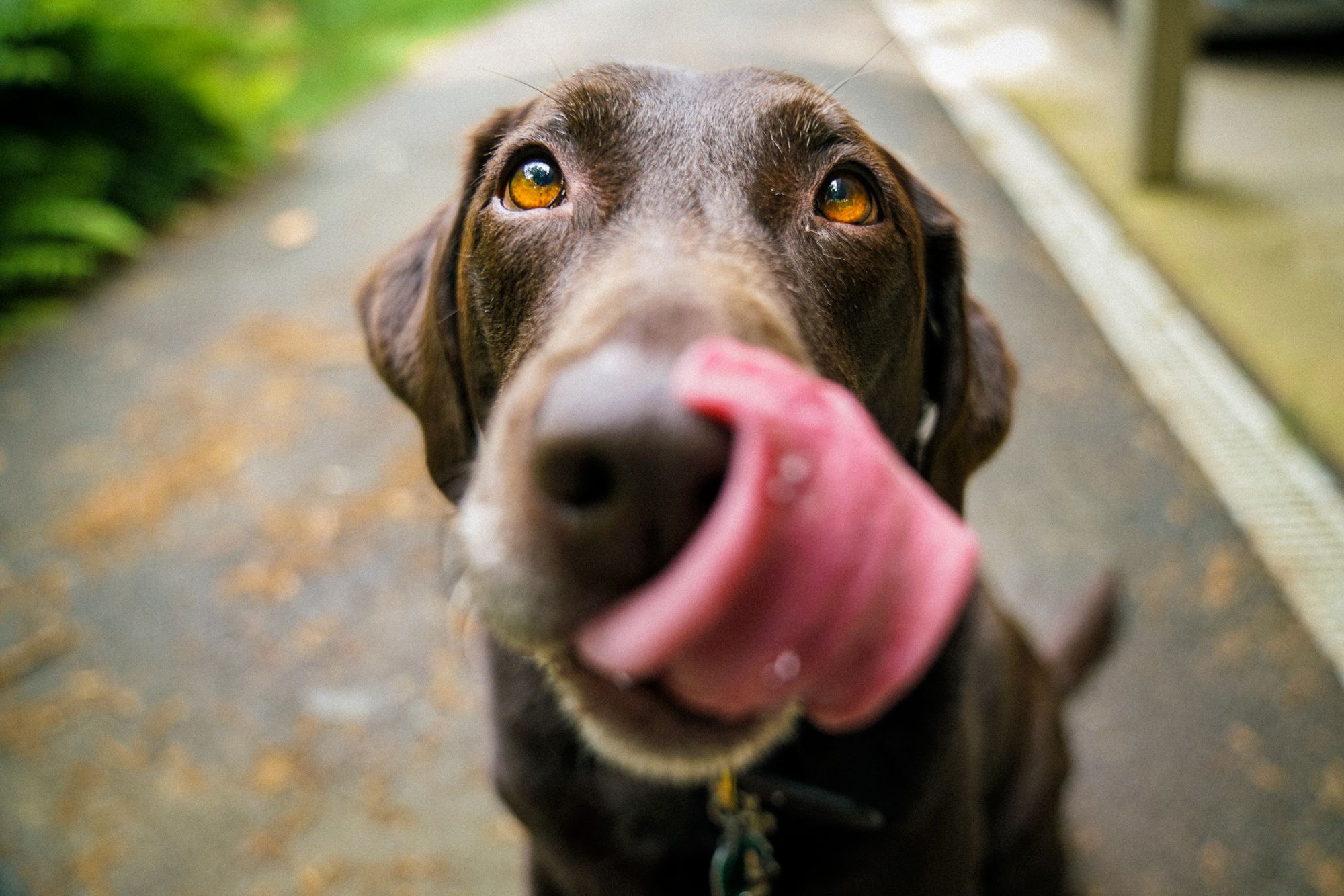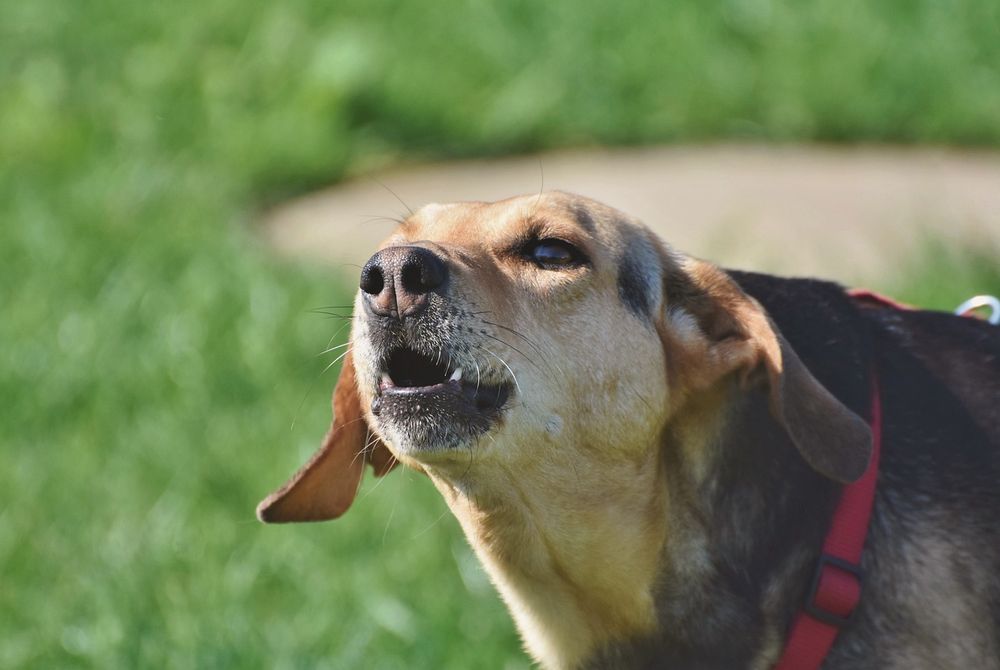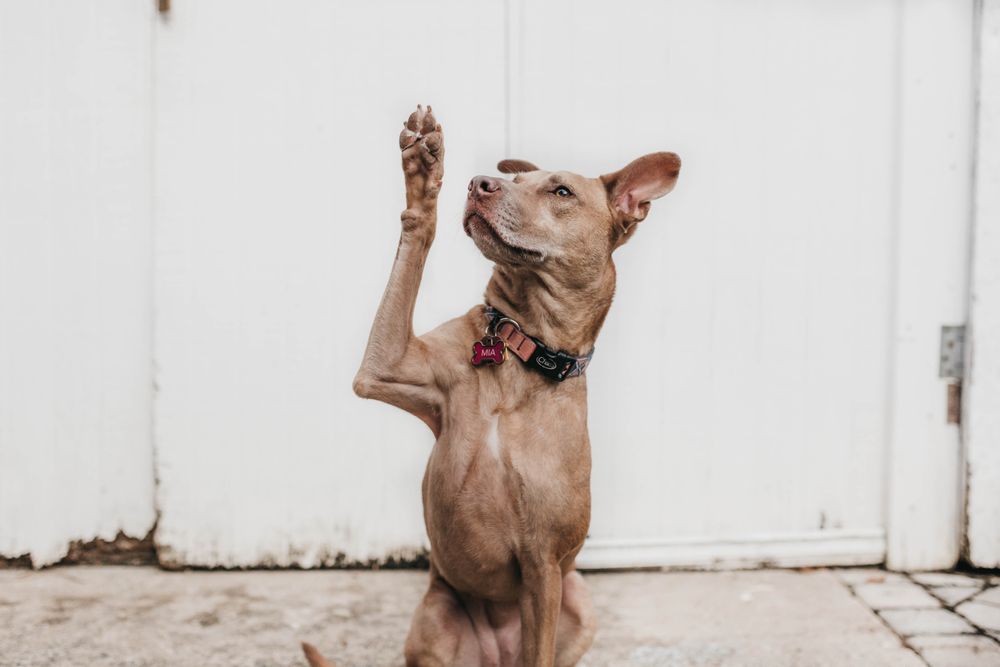Dogs are natural hunters and scavengers, and their wolf ancestors spent the majority of their waking hours trying to find food. Today, our dogs live relatively luxurious lives and are handed their daily meals. While it might seem nice that we give them this leisurely lifestyle, they are still animals with brains and bodies predisposed to problem solving and feeding themselves. With that in mind, this article will explain:
- What constitutes a work-to-eat toy or bowl
- The benefits of work to eat toys, and how they can help ease anxiety and boredom
- An overview of the types of work-to-eat toys and bowls that are available in the market, and a few we recommend you try with your dog
What is a work-to-eat toy or bowl?
A work-to-eat toy
This is a plaything that dispenses food when your dog interacts with it (e.g. a kibble ball).
A work-to-eat bowl
Sometimes known as a slow feeder, is a bowl that incorporates a maze or other obstacles in order to force your dog to use their tongue (and brain) in order to access the food in the bowl.
What are the benefits of work-to-eat toys and bowls?
Curb boredom
- Boredom can lead to the destruction of your favorite slippers and other undesirable behavior like barking. By giving your dog a work-to-eat toy or bowl, you’re forcing them to expend mental energy and reducing the likelihood that they’ll have energy left to destroy your slippers.
Ease anxiety
- We often hear from new pet parents whose dogs bark when they leave the house. This behavior is often driven by anxiety, and can be eased by providing your dog with a distraction such as their dinner in a work-to-eat bowl or toy. The reason this strategy is effective is because your dog will be focused on getting their food out of the bowl or toy and less on your departure.
What are the different types of work-to-eat bowls and toys?
Kibble Balls
- These are work-to-eat toys that your dog can nose around in order to get their food to fall out. They are usually best when used with dry food or dry treats. We recommend: The Twist-n-Treat and the Bob-A-Lot.
Slow food bowls
- These are usually plastic bowls that have little mazes or other obstacles in them designed to occupy dog tongues. We recommend: the Outward Hound Fun Feeder Interactive Dog Bowl, Purple.
Puzzle toys
- Puzzle toys usually have little latches and drawers and pegs that must be manipulated in order to release yummy stuff, wet or dry. We recommend: the Outward Hound Brick Puzzle Game.
Activity mats
- Also known as “snuffle” mats, these can be used with dry food or treats. They’re kind of like rugs that your dog has permission to play with! We recommend: the classic snuffle mat.
Toys You Can Stuff ‘Stuff’ Into
- At Petcademy, we call these “Kong style” toys. Wet food or spreadable treats like soft cheese, peanut butter, baby food, or fish paste, are easy to pair with a fun toy. In order to increase the time it takes your dog to get the good “stuff” out of the toy, you can try freezing the toy for a few hours once it’s been stuffed. In terms of toys, we recommend: the Toppl and the Classic Kong.

Frequently asked questions about work-to-eat bowls and toys
How often should I use work-to-eat toys and bowls with my pet?
We recommend using work-to-eat toys and bowls daily, either as part of your dog's regular mealtime or as a separate activity. Using work-to-eat toys and bowls can help keep your dog mentally stimulated and engaged, which can reduce boredom and anxiety. Additionally, by making your dog work for their food, you can help slow down their eating and promote better digestion.
Can work-to-eat toys and bowls help reduce my pet's behavior problems, such as destructive chewing or excessive barking?
Work-to-eat toys and bowls can be a helpful tool in managing certain behavior problems, such as destructive chewing and excessive barking, by providing mental stimulation and an appropriate outlet for natural behaviors. However, it's important to note that work-to-eat toys and bowls are not a cure-all solution for behavior problems. In addition to using these tools, it's important to address the underlying causes of the behavior, such as lack of exercise, training, or socialization.
How do I clean and maintain work-to-eat toys and bowls?
Cleaning and maintaining work-to-eat toys and bowls is important to ensure your pet's health and safety, as well as to prolong the lifespan of the toys. Here are some general tips on how to clean and maintain work-to-eat toys and bowls:
- Read the instructions: Before cleaning your work-to-eat toys and bowls, it's important to read the instructions that came with them to ensure that you are using the appropriate cleaning methods and materials.
- Handwash: Most work-to-eat toys and bowls can be hand washed with warm water and mild soap. Make sure to clean all nooks and crannies, including any small crevices or openings, to remove any leftover food debris or bacteria.
- Use a brush: If your work-to-eat toy or bowl has deep grooves or small openings that are difficult to clean by hand, you can use a small brush or toothbrush to scrub the inside and remove any remaining food debris.
- Use a dishwasher: Some work-to-eat toys and bowls are dishwasher safe. If this is the case, you can put them on the top rack of the dishwasher for easy and thorough cleaning.
- Dry completely: After cleaning, make sure to dry your work-to-eat toys and bowls completely before using them again. This can help prevent the growth of bacteria or mold.
- Check for damage: Regularly inspect your work-to-eat toys and bowls for any signs of damage, such as cracks, breaks, or missing pieces. If you notice any damage, replace the toy or bowl immediately to prevent your pet from accidentally swallowing any small pieces.
How do I introduce my pet to work-to-eat toys and bowls and teach them how to use them?
Take these steps to introduce your dog to work-to-eat toys and bowls:
- Choose the right toy or bowl: Select a work-to-eat toy or bowl that is appropriate for your pet's size, age, and activity level. For example, if your pet is a heavy chewer, choose a durable toy that can withstand their chewing.
- Make it enticing: To get your pet interested in the toy or bowl, add a small amount of their favorite food or treat inside. This will help them associate the toy with positive experiences and encourage them to explore it further.
- Supervise: Supervise your pet to ensure they are using it safely and correctly.
- Encourage exploration: Allow your pet to explore the toy or bowl at their own pace. Some pets may take longer to figure it out than others, so be patient and offer encouragement. Reward success: When your pet successfully retrieves the food or treat from the toy or bowl, reward them with verbal praise or an additional treat. This will reinforce the behavior and encourage them to use the toy or bowl again in the future.




